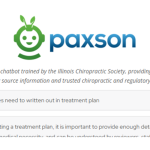
Chiropractic Marketing Pitfalls: A Guide to FTC Compliance

It is essential for chiropractic physicians to market services and products to prospective patients. However, it is equally important to steer clear of marketing pitfalls and ensure compliance with Federal Trade Commission (FTC) regulations to avoid damaging consequences. This article provides chiropractic physicians with insights on the “Health Products Compliance Guidance” from the FTC and offers advice on how to prevent common mistakes in chiropractic marketing.
The Health Products Compliance Guidance from the FTC provides direction for healthcare providers and businesses to ensure that their marketing materials for health products, including chiropractic services and products, are truthful, not deceptive, and substantiated by scientific evidence. The guidance outlines the three steps for interpreting ad meaning, which involves determining the message conveyed by the ad, deciding whether the message is likely to be understood by consumers, and assessing whether the message is truthful and not misleading. The guidance also identifies factors to consider when substantiating claims, including the type of claim, product type, consumer perception, type of evidence, and consistency of evidence. Overall, the document serves as a framework for companies to create accurate and compliant marketing materials for health products, including chiropractic services and products.
Although the original FTC document primarily addressed supplements, the new guidance that was released in January 2023 applies to a broader definition of health-related products, including “foods, over-the-counter (OTC) drugs, homeopathic products, health equipment, diagnostic tests, and health-related apps.” These guidelines are important to understand and review against all of your marketing efforts across all media.
Identifying Express and Implied Claims
The first step in evaluating the truthfulness and accuracy of advertising and marketing materials is to identify all express and implied claims conveyed to consumers acting reasonably. Express claims are those made directly in an advertisement, whereas implied claims are suggested or reasonably implied by an ad. It is essential to note that marketers are responsible for the accuracy of both express and implied claims.
The FTC evaluates claims from the standpoint of the intended audience, and marketers must consider the “net impression” conveyed by all elements of the ad. When an ad lends itself to more than one reasonable interpretation, the advertiser is responsible for substantiating each interpretation.
For example, if an ad for a weight-loss product features images of doctors in white lab coats looking through microscopes, molecular structures, and a stack of medical journals, the ad may imply that the product has been clinically proven to be effective for weight loss. Similarly, a children’s nutritional drink ad featuring an image of the straw encircling a child to create a barrier as another child sneezes in her direction may imply that the product can help protect children from catching colds or other airborne infections.
When an advertisement suggests that a product is beneficial for the treatment of a disease, the advertiser must substantiate the implied disease claim, even if the ad contains no express reference to a disease. For example, an ad for an herbal supplement claiming to boost the immune system to help maintain a healthy nose and throat during the winter season may imply that the product helps prevent colds.
When to Disclose Qualifying Information
An advertisement can be deceptive because of what it fails to say. Under Section 15 of the FTC Act, an ad is misleading if it fails to disclose information that is material in light of the claims in the ad or with respect to how consumers would customarily use the product. Thus, if the ad would be misleading without certain key qualifying information, that information must be disclosed.
For example, advertisers should disclose any significant limitations on an advertised health benefit. Similarly, advertising that makes either an express or implied safety representation should include information about any significant safety risks. Even absent affirmative safety representations, advertisers may need to inform consumers of significant safety concerns related to the customary use of a product.
For instance, a multi-vitamin and mineral supplement ad claiming to boost energy levels should disclose any significant limitations on the advertised benefit. Similarly, a topical ointment ad claiming to maintain joint health and mobility into old age should include information about any significant safety risks.
Substantiating Claims: Factors to Consider
The Health Products Compliance Guidance from the FTC outlines several factors that determine the appropriate amount and type of substantiation required for health-related claims made by advertisers. These factors include:
Type of product: Generally, products related to consumer health or safety require a relatively high level of scientific substantiation.
Type of claim: Claims that are difficult for consumers to assess on their own are held to a more exacting standard.
Benefits of a truthful claim and the cost or feasibility of developing substantiation for the claim: These factors are often weighed together to ensure that valuable product information isn’t withheld from consumers.
Consequences of a false claim: How does the false claim impact the patient? Both physical and economic harm are considered as to how much substantiation is required:
- Physical harm: If a consumer believes the false claim and relies on the product instead of a more effective treatment, it could lead to physical harm.
- Economic harm: If a consumer buys a product that doesn’t work or pays more for a product that is no better than cheaper alternatives, it can result in economic harm.
Amount of substantiation that experts in the field believe is reasonable: The FTC gives great weight to accepted norms in the relevant fields of research and consults with experts in those fields.
The FTC’s standard for substantiation of health-related claims is “competent and reliable scientific evidence,” which refers to tests, analyses, research, or studies that have been conducted and evaluated in an objective manner by experts in the relevant field and are generally accepted in the profession to yield accurate and reliable results. The research must also be sufficient in quality and quantity based on standards generally accepted in the relevant scientific fields, when considered in light of the entire body of relevant and reliable scientific evidence, to substantiate that the representation is true.
By considering these factors when making claims in our chiropractic marketing materials, we can ensure that our claims are accurate, truthful, and supported by scientific evidence.
Mischaracterizations of FDA approval
Some products that are sold in chiropractic offices claim FDA approval. It is important to understand that advertisers should be careful not to misrepresent how extensively a product or claim has been reviewed, authorized, or approved by the FDA. Advertisers should also avoid misrepresenting or overstating any FDA assessment of the science supporting a particular claim. Sometimes product manufacturers will receive a letter from the FDA that allows the manufacturer to make a claim in labeling that there is a relationship between a substance in the product and a particular healthcare risk reduction. This type of letter is NOT FDA approval and should not be advertised as such.
Be very careful to review your marketing claims regarding “FDA Approval.” This includes making the claims directly to the patient “through healthcare practitioners or other intermediaries [i.e., non-physician employees].”
Headline and Testimonial Pitfalls
Two common pitfalls in chiropractic marketing are misleading headlines and testimonials. Misleading headlines can be deceptive if they exaggerate the benefits of our services or products. For example, a headline that claims our chiropractic services can cure all types of back pain may be misleading if it’s not supported by scientific evidence.
Testimonials can also be misleading if they don’t reflect the typical experience of our patients or if they are not based on actual experiences. To avoid this, we should ensure that our testimonials are truthful, not misleading, and based on actual experiences of our patients.
Conclusion
It is crucial for chiropractic physicians to market their services and products while also ensuring compliance with FTC regulations. The Health Products Compliance Guidance from the FTC provides a framework for creating accurate and compliant marketing materials for health-related products, including chiropractic services and products. Advertisers must identify express and implied claims conveyed to consumers reasonably and be responsible for the accuracy of both. Disclosing qualifying information is important to avoid misleading consumers, and advertisers must substantiate claims with competent and reliable scientific evidence. Understanding these guidelines and reviewing marketing efforts against them is essential to prevent common marketing pitfalls and avoid damaging consequences.
















